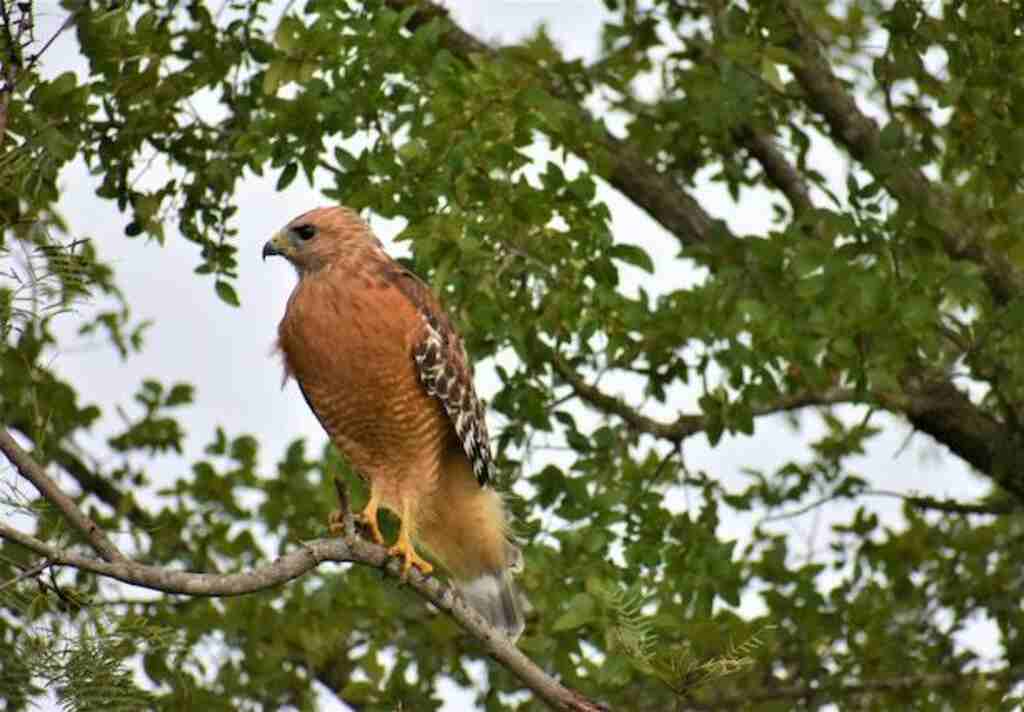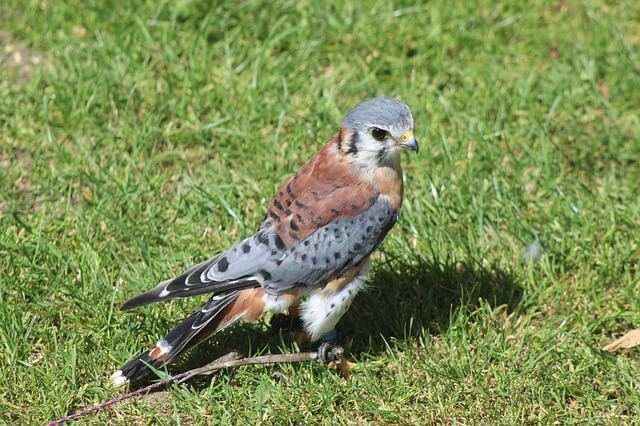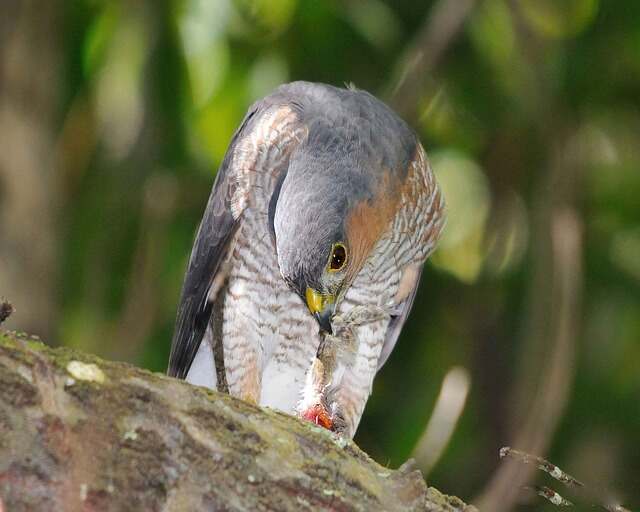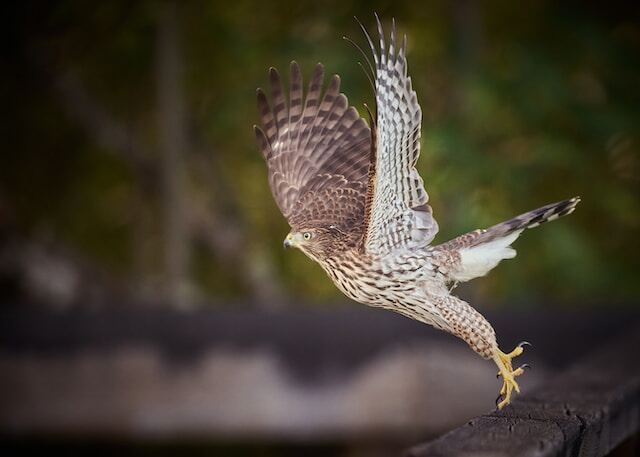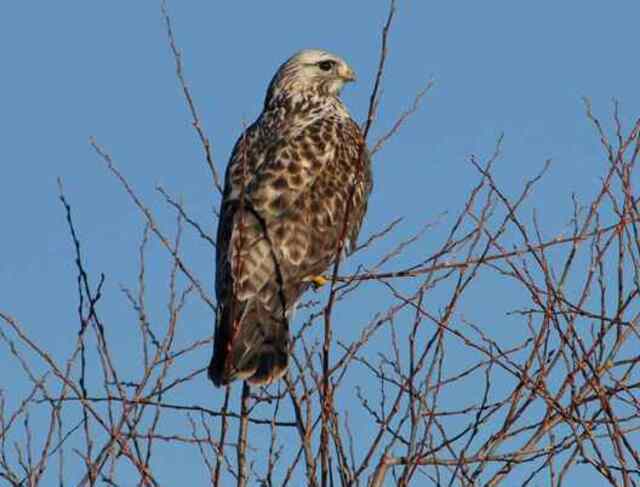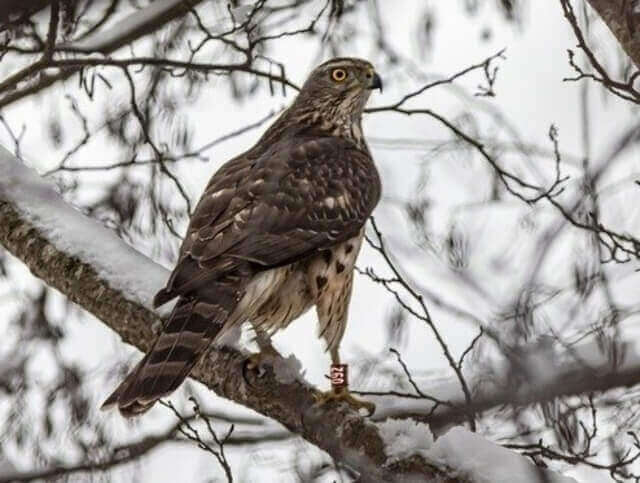Do Hawks Attack Crows? Brace yourself for the thrilling clash between two common bird species: hawks and crows!
In this captivating article, we delve into the intense competition for food and territory that leads to aggression and conflict.
Explore the reasons behind hawk attacks, the impact on crow populations, and the delicate balance of nature.
Join us on a wild ride through their predator-prey relationship and uncover the hidden secrets of their coexistence.
Get ready for an exhilarating exploration of avian adversaries and the surprising realities of survival!
Table of Contents
- 1 Key Takeaways
- 2 Do Hawks Attack Crows?
- 3 Overview of Hawks and Crows
- 4 Competition for Food and Territory
- 5 Aggressive Behavior
- 6 Prey and Predator Relationship
- 7 Reasons Why Hawks Attack Crows
- 8 Frequency of Attacks
- 9 Impact on Crow Populations
- 10 Conservation Efforts
- 11 Frequently Asked Questions
- 11.1 What is the average lifespan of a hawk and a crow?
- 11.2 Can crows defend themselves against hawk attacks?
- 11.3 Are there any other birds that hawks commonly attack besides crows?
- 11.4 Do hawks and crows interact or communicate with each other in any way?
- 11.5 What is the ecological role of hawks and crows in their respective environments?
- 12 Conclusion
- 13 Author
Key Takeaways
- Aggressive behavior between hawks and crows can arise due to factors such as mating, nesting, and social hierarchies.
- Understanding hawk behavior in relation to crow populations is important for predicting the likelihood of attacks and mitigating potential conflicts.
- Effective conservation efforts, including habitat restoration, predator control, public education, and scientific research, are crucial in maintaining a healthy and balanced ecosystem and preserving the biodiversity of ecosystems.
Do Hawks Attack Crows?
Yes, hawks do occasionally attack crows. Crows are considered rivals by hawks, as they may compete for food and territory. Hawks may target crows to defend their resources or eliminate competition. However, not all hawk species attack crows, and interactions can vary.
Overview of Hawks and Crows
An examination of the natural history of hawks and crows reveals intriguing insights into the complex and often contentious relationship between these two species.
Hawks are birds of prey that are known for their sharp talons and keen eyesight, which they use to hunt small animals such as rodents and birds.
They prefer open habitats such as grasslands and savannas, and are commonly found in forests and woodlands as well.
Crows, on the other hand, are highly adaptable and can be found in a variety of habitats, including urban areas, farmlands, and forests.
They are known for their intelligence and social behavior, and are often seen in large groups.
When it comes to nesting habits, hawks typically build nests high up in trees or on cliffs, while crows build their nests in trees or on buildings.
Understanding the habitat preferences and nesting habits of hawks and crows is just the beginning of unraveling their complex relationship.
As we delve deeper, we will explore the competition for food and territory between these two species.
Competition for Food and Territory
Competition between different bird species for resources such as food and territory is a common occurrence in the animal kingdom. Hawks and crows are no exception.
Both species are opportunistic feeders and will compete for the same food sources, such as rodents and small mammals.
This competition for food can have ecological implications, as it can lead to changes in the population dynamics of both species.
In addition, hawks and crows may also compete for nesting sites and territory. Despite this competition, hawks and crows generally coexist peacefully, with each species utilizing different foraging strategies and habitats.
However, in some cases, hawks may exhibit aggressive behavior towards crows if they perceive them as a threat to their territory or offspring. This aggressive behavior will be discussed in the subsequent section.
Aggressive Behavior
Aggressive behavior is a common phenomenon observed in various animal species, including birds. The reasons for aggression can vary, and may include competition for resources, defense of territory, or protection of mates and offspring.
There are also different types of aggressive behavior, such as physical aggression, vocal aggression, and visual displays, which may vary depending on the species and context.
Reasons for Aggression
One possible reason for hawk aggression towards crows is territorial defense. Hawks are known to be territorial creatures, and they may view crows as a threat to their territory.
Crows are also known to be opportunistic and may take advantage of hawk nests or food sources. This competition for resources may lead to aggressive behavior between the two species.
Additionally, some hawks may view crows as potential prey and may attack them for food.
However, it is important to note that aggression in both hawks and crows can also be caused by other factors such as mating, nesting, and social hierarchies.
Understanding the causes of aggression in these two species can help prevent conflicts and promote coexistence.
In the subsequent section about types of aggressive behavior, we will explore the different ways in which hawks and crows express aggression towards each other and other species.
Types of Aggressive Behavior
The expression of aggression in both hawks and crows can take various forms, including vocalizations, physical displays, and physical attacks.
When it comes to aggressive confrontations, both species are known for defending their territories fiercely.
Hawks are more likely to use physical attacks, while crows rely on their vocalizations and physical displays to deter intruders.
Territorial disputes can arise when there is a limited supply of food or nesting sites, which can lead to heightened aggression.
In addition, hawks and crows may display aggressive behavior towards each other due to their predator and prey relationship.
As we explore the dynamics of this relationship, we will gain a deeper understanding of how these two species interact in the wild.
Prey and Predator Relationship
Interactions between prey and predator are complex and can vary depending on the species involved, their behavior, and the environment in which they live.
Predator prey dynamics play an important role in ecological interactions, shaping the structure of ecosystems and influencing the behavior of the organisms that inhabit them.
The relationship between hawks and crows is an example of this dynamic.
While hawks are known to prey on crows, the extent to which they do so depends on a variety of factors, such as the abundance of other prey in the environment and the behavior of the birds themselves.
Additionally, the relationship between hawks and crows can be influenced by factors such as habitat fragmentation and climate change.
Understanding the complexities of the prey-predator relationship is important for understanding the behavior of animals in the natural world and the forces that shape their interactions.
With this in mind, we can better explore the reasons why hawks attack crows.
Reasons Why Hawks Attack Crows
Factors influencing the predation of crows by hawks include the availability of alternative prey and the hunting strategies employed by the hawk.
Hawks are opportunistic predators and will target a variety of prey, including crows, if they are available and easy to catch.
However, if the hawk is hunting in an area with a high abundance of small mammals, it may be less likely to target crows as they are more difficult to catch and consume compared to smaller prey like rodents.
A hypothetical scenario could be that a hawk in a forested area with a high population of squirrels may be less likely to attack crows as they are not as abundant and easier prey is available.
Understanding hawk behavior in relation to crow populations is important for predicting the likelihood of attacks and mitigating potential conflicts between these two species.
The next section will explore the frequency of attacks and possible reasons for variations in predation rates.
Frequency of Attacks
The frequency of attacks by hawks on crows varies based on seasonal patterns and geographic locations.
In some areas, attacks may be more prevalent during certain times of the year, while in other regions, attacks may occur throughout the year.
Similarly, the frequency of attacks may differ depending on the type of environment and habitat in which the hawks and crows reside.
Seasonal Patterns
During different seasons of the year, there are variations in the likelihood of hawks attacking crows. These seasonal patterns are influenced by factors such as migration patterns and nesting habits of both hawks and crows.
For example, during the breeding season, crows are more territorial and may be more likely to defend their nests, making them a more challenging target for hawks.
Conversely, during the winter months, when food sources are scarce, crows are more likely to scavenge and may be more vulnerable to hawk attacks.
Additionally, some species of hawks may migrate to different areas during certain seasons, which could impact the frequency of attacks.
Understanding these seasonal patterns is essential for developing effective strategies to manage hawk-crow interactions.
In the subsequent section about geographic variations, we will explore how regional differences may also impact these interactions.
Geographic Variations
Geographic variations play a significant role in the interactions between hawks and crows, as the distribution and abundance of both species can vary greatly across different regions.
Regional differences in the habitats and prey availability can affect the frequency and intensity of hawk attacks on crows.
For instance, in some areas where crows are abundant and form large congregations, hawks may be more likely to attack them as they provide a concentrated food source.
However, in other areas where crows are more dispersed and have access to diverse food sources, hawks may not pose as much of a threat.
Furthermore, behavioral adaptations of both hawks and crows can also vary across regions, influencing their likelihood of encountering each other and the outcomes of their interactions.
For example, some populations of crows may develop strategies to avoid hawk attacks, such as mobbing or hiding, while some hawks may learn to target other prey items that are more accessible or less risky.
Understanding the geographic variations in hawk-crow interactions is important for predicting their impact on crow populations, as discussed in the subsequent section.
Impact on Crow Populations
Assessing the effect of hawk attacks on crow populations can provide valuable insight into the dynamics of predator-prey relationships and their impact on ecosystem balance.
Hawks are known to prey on crows, and their attacks can lead to a decrease in crow populations. This, in turn, can have an effect on the ecosystem, as crows play a crucial role in seed dispersal and scavenging.
However, the impact of hawk attacks on crow populations can vary depending on the geographical location and the availability of alternative prey.
For instance, in areas where crows have a larger food source, such as urban areas, hawk attacks may have a smaller impact on crow populations.
Understanding these dynamics can help in developing effective conservation efforts for both hawks and crows, which will ultimately contribute to maintaining a healthy and balanced ecosystem.
Conservation Efforts
Effective conservation efforts are crucial in maintaining a healthy and balanced ecosystem, as illustrated by the interconnectedness of species in the food web, where the loss of one species can have cascading effects on others.
Crow conservation is an important aspect of preserving the biodiversity of ecosystems, especially in regards to predator-prey dynamics.
Here are some important efforts being made to conserve crows:
(1) habitat restoration,
(2) predator control,
(3) public education, and
(4) scientific research.
Habitat restoration includes planting native vegetation and managing land to support crow populations.
Predator control involves managing populations of predators that may negatively impact crow populations, such as hawks.
Public education aims to raise awareness about the importance of crows as a keystone species in the ecosystem and the need for conservation efforts.
Finally, scientific research plays a crucial role in understanding the factors that affect crow populations and developing effective conservation strategies.
These conservation efforts are essential to maintain a healthy ecosystem and ensure the survival of not only crows but also other species in the food web.
As such, it is important to continue supporting and implementing these efforts to conserve crows and preserve the ecosystem’s balance.
This underscores the importance of considering the interconnectedness of species and the need for a holistic approach to conservation.
This brings us to the conclusion of this discussion.
Frequently Asked Questions
What is the average lifespan of a hawk and a crow?
Hawk and crow lifespans: a comparison reveals that hawks live longer than crows. The science of bird longevity suggests that factors such as habitat, diet, and predation play a role in determining lifespan. Understanding these factors can inform conservation efforts.
Can crows defend themselves against hawk attacks?
Crows have several defense mechanisms against hawk attacks, including mobbing behavior, alarm calls, and hiding in vegetation. However, hawk hunting strategies can vary, making it difficult to predict the outcome of any given encounter.
Are there any other birds that hawks commonly attack besides crows?
Some bird preys of hawks include doves, pigeons, and sparrows. Hawks use various hunting techniques, such as soaring and surprise attacks, to capture their prey. Understanding hawk behavior is important for bird enthusiasts seeking to protect their feathered friends.
Do hawks and crows interact or communicate with each other in any way?
Hawks and crows exhibit predator-prey dynamics and territorial behavior, but there is no evidence to suggest that they communicate or interact with each other in any significant way. This relationship is shaped by evolutionary adaptations rather than social interactions.
What is the ecological role of hawks and crows in their respective environments?
Predator-prey dynamics and competitive exclusion are important ecological roles played by hawks and crows in their respective environments.
Both species have adaptations that give them an advantage in hunting or scavenging, but also face competition from other predators and scavengers.
Understanding these relationships is important for maintaining healthy ecosystems.
Conclusion
In conclusion, the conservation of crows is crucial for maintaining a healthy and balanced ecosystem. To achieve this, a holistic approach is required that involves habitat restoration, predator control, public education, and scientific research.
Conservation strategies should focus on the protection and restoration of habitat, as well as the control of predators such as hawks that may attack crow populations.
Additionally, public education on the importance of crows in maintaining a healthy ecosystem is necessary.
Future research should also focus on understanding the behavior and ecology of crows, as well as the impact of human activities on their populations.
By implementing these strategies, we can ensure the conservation of crows and maintain a healthy and balanced ecosystem for generations to come.
| Conservation Strategies | Future Research | Importance |
|---|---|---|
| Habitat restoration | Behavior and ecology of crows | Maintaining a balanced ecosystem |
| Predator control | Impact of human activities | Public education on the importance of crows |
| Public education |


